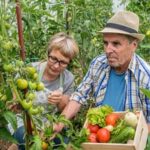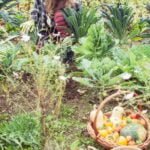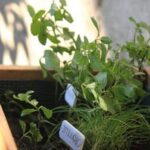When it comes to vegetable gardening in urban environments, one important factor to consider is the quality of city soil. The question many gardeners have is, “do most vegetable gardens like city soil?” Understanding the characteristics and composition of city soil is crucial in determining whether it is suitable for growing vegetables successfully.
City soil can be impacted by a variety of factors such as pollution, compacted areas, and limited access to nutrients. The urban environment can pose challenges for cultivating healthy crops, but at the same time, there are also unique benefits that come with gardening in the city.
In this article, we will explore the impact of urban environments on soil quality and the benefits and challenges of gardening in city soil. We will also discuss the most common vegetables that thrive in city soil, along with tips for preparing and improving city soil for vegetable gardening.
Additionally, we will delve into urban gardening techniques for maximizing yield in city soil, and provide case studies of successful vegetable gardens in urban environments. Whether you’re a seasoned gardener or a beginner looking to start your own urban garden, understanding the intricacies of city soil is essential for growing a thriving vegetable garden.
The Impact of Urban Environments on Soil Quality
Effects of Pollution
One of the main challenges of city soil is pollution. Heavy metals, chemicals, and other pollutants can contaminate urban soil, making it less suitable for gardening. These pollutants can negatively affect plant growth and even pose risks to human health if consumed through the vegetables grown in this type of soil.
Soil Compaction and Erosion
Urbanization often leads to increased soil compaction and erosion. The constant traffic, construction activities, and lack of green spaces in cities contribute to soil compaction, which reduces pore space and restricts root growth. Erosion may also occur due to inadequate vegetation cover or improper water management practices.
Loss of Organic Matter
Another effect of urbanization on soil quality is the loss of organic matter. As urban areas expand, natural landscapes are often replaced by concrete surfaces, buildings, and infrastructure. This results in the loss of vegetative cover and organic matter that would otherwise contribute to healthy soil structure.
Understanding these impacts on urban soil quality is crucial for successful vegetable gardening in the city. By being aware of these challenges, urban gardeners can take steps to improve the quality of their city soil and grow thriving vegetable gardens despite these obstacles.
The Benefits and Challenges of Gardening in City Soil
When it comes to gardening in a city environment, there are both benefits and challenges to consider. City soil, often referred to as urban soil, has its own unique characteristics that can impact the success of a vegetable garden.
One benefit of gardening in city soil is the potential for increased access to sunlight and space. Many urban areas have rooftop gardens, community gardens, or small plots of land that can be used for growing vegetables. Additionally, the demand for locally grown produce in cities provides an opportunity for urban gardeners to contribute to their community and potentially even generate income.
However, one of the major challenges of gardening in city soil is the quality of the soil itself. Due to factors such as pollution, compacted soil, and limited organic matter, city soil may not be as conducive to plant growth as rural or suburban soils. This means that urban gardeners must be proactive about preparing and improving their city soil in order to create a successful vegetable garden.
To address these challenges and make the most of gardening in city soil, consider the following tips:
- Test the pH levels of your city soil and amend it accordingly with organic matter or compost.
- Use raised beds or containers filled with high-quality potting mix to bypass poor native soils.
- Implement crop rotation and cover cropping techniques to maintain soil fertility over time.
By understanding both the benefits and challenges of gardening in city soil, urban gardeners can take proactive steps to create thriving vegetable gardens even in an urban environment.
Most Common Vegetables That Thrive in City Soil
When it comes to gardening in urban environments, choosing the right vegetables that can thrive in city soil is crucial for a successful harvest. While city soil may pose some challenges due to its characteristics and quality, there are still plenty of vegetables that can adapt and grow well in this type of environment.
Some of the most common vegetables that thrive in city soil include leafy greens such as spinach, lettuce, and kale. These plants have shallow roots and can tolerate compacted soil, making them suitable for urban gardening. Additionally, root vegetables like carrots and radishes are also well-suited for city soil as they can break through hard layers and thrive in less-than-ideal conditions.
Furthermore, legumes such as green beans and peas are excellent choices for city soil due to their ability to fix nitrogen in the soil, which helps improve its fertility over time. On top of that, herbs like basil, parsley, and chives also perform well in urban environments and can add flavor to your dishes while requiring minimal space to grow.
These resilient vegetables are not only suitable for city soil but also provide a variety of nutrients and flavors for homegrown meals.
| Vegetable | Growing Conditions |
|---|---|
| Spinach | Shallow roots, tolerates compacted soil |
| Carrots | Can break through hard layers of soil |
| Basil | Thrives in minimal space with proper care |
Tips for Preparing and Improving City Soil for Vegetable Gardening
City soil can be a challenging environment for gardening due to its compacted nature and potential contamination from urban pollutants. However, with the right preparation and improvements, it is possible to create a thriving vegetable garden in the city. One of the first steps to take when preparing city soil for gardening is to conduct a soil test. This will help you determine the pH levels, nutrient content, and any potential contaminants present in the soil.
Once you have an understanding of your city soil’s quality, there are several techniques you can use to improve it for vegetable gardening. One method is incorporating organic matter such as compost and manure into the soil. This not only adds essential nutrients but also helps improve soil structure and water retention. Additionally, using raised beds or containers filled with high-quality potting mix can provide a more controlled environment for your vegetables to grow in city soil.
Another important consideration when preparing city soil for vegetable gardening is addressing any contamination issues. If the soil tests reveal high levels of heavy metals or other pollutants, it may be necessary to remediate the soil before planting. This can involve techniques such as phytoremediation, which uses plants to remove contaminants from the soil, or adding amendments that help neutralize toxins.
| Soil Preparation Technique | Benefits |
|---|---|
| Incorporating organic matter | Improves nutrient content and enhances soil structure |
| Raised beds or containers with potting mix | Provides a controlled growing environment and minimizes exposure to contaminated city soil |
| Remediation techniques (e.g. phytoremediation) | Addresses contamination issues by neutralizing toxins or removing pollutants from city soil |
Urban Gardening Techniques for Maximizing Yield in City Soil
Urban gardening in city soil presents some unique challenges, but with the right techniques, it is possible to maximize the yield of your vegetable garden. By employing innovative methods and utilizing available resources, urban gardeners can overcome the limitations of city soil and cultivate a thriving garden.
Container Gardening
One effective technique for maximizing yield in city soil is container gardening. This method allows gardeners to control the quality of the soil by using a high-quality potting mix, ensuring that the plants have access to the necessary nutrients for optimal growth. Additionally, container gardening is ideal for urban environments where space may be limited, as it allows for flexibility in placement and organization of plants.
Vertical Gardening
Vertical gardening is another technique that can be employed to maximize yield in city soil. By growing vegetables vertically on trellises or walls, urban gardeners can take advantage of vertical space and increase their overall harvest. This method is especially useful for vining plants such as tomatoes, cucumbers, and beans, which can flourish when grown upwards instead of outwards.
Intensive Planting
Intensive planting involves growing crops closely together in order to maximize yield and make efficient use of limited space. This technique is well-suited for city soil where space may be at a premium. By carefully planning and spacing crops, urban gardeners can achieve higher yields from their vegetable gardens while making the most of their available growing area.
Case Studies of Successful Vegetable Gardens in Urban Environments
One example of a successful vegetable garden in an urban environment is the Willis Avenue Community Garden in the South Bronx, New York. This community garden has transformed a once-abandoned lot into a thriving green space that provides fresh produce to local residents.
Through careful soil preparation and regular maintenance, the garden has been able to grow a wide variety of vegetables, including tomatoes, peppers, and leafy greens. The success of this community garden highlights the potential for vegetable gardening in city soil, even in areas with limited space and resources.
Another case study is the Growing Home urban farm in Chicago, Illinois. This non-profit organization utilizes vacant lots in the city to grow organic fruits and vegetables, providing job training and employment opportunities for individuals with barriers to employment.
Despite the challenges of city soil contamination and limited space, Growing Home has implemented innovative techniques such as raised beds and composting to maintain healthy soil and maximize crop yield. The farm has become a model for sustainable urban agriculture, demonstrating that with proper management, productive vegetable gardens can thrive in urban environments.
In Detroit, Michigan, the Earthworks Urban Farm has proven that even in post-industrial cities with significant soil contamination, successful vegetable gardening is possible. By utilizing raised beds filled with clean topsoil and implementing remediation techniques such as phytoremediation, this urban farm has been able to produce abundant harvests of vegetables while also addressing environmental issues related to soil pollution.
These case studies illustrate that with strategic planning and sustainable practices, vegetable gardens can flourish in city soil despite its unique challenges.
Conclusion
In conclusion, while city soil may present some challenges due to its unique characteristics and potential contamination, it is indeed possible to create successful vegetable gardens in urban environments. By understanding the impact of urbanization on soil quality and learning about the benefits and challenges of gardening in city soil, individuals can take steps to prepare and improve the soil for their vegetable gardens.
It is important for urban gardeners to choose the right vegetables that thrive in city soil, such as tomatoes, peppers, lettuce, and kale. Additionally, implementing techniques like container gardening, raised beds, and vertical gardening can help maximize yield in limited urban spaces. The key is to be proactive in preparing the soil, choosing the right plants, and utilizing innovative gardening techniques.
Case studies of successful vegetable gardens in urban environments serve as inspiration and proof that with proper care and attention, thriving gardens can be established even in city soil. By following the tips for preparing and improving city soil for vegetable gardening and implementing urban gardening techniques for maximizing yield, individuals can make the most of city soil for their vegetable gardens.
With determination and a little bit of creativity, anyone can enjoy fresh produce grown right in their own urban backyard.
Frequently Asked Questions
Do Vegetables Prefer Acidic or Alkaline Soil?
Vegetables generally prefer slightly acidic to neutral soil conditions. This range typically falls between a pH of 6.0 and 7.0, although there can be some variation depending on the specific vegetable.
Soil pH plays a significant role in nutrient availability to plants, so it’s important to test the soil and make any necessary adjustments for optimal vegetable growth.
Do Tomatoes and Peppers Like Acidic Soil?
Tomatoes and peppers tend to thrive in slightly acidic soil with a pH level ranging from 6.0 to 6.8. This type of soil provides an ideal environment for these plants to absorb nutrients such as phosphorus, potassium, and magnesium, all of which are essential for healthy fruit production.
Do Tomatoes Prefer Acidic or Alkaline Soil?
Tomatoes generally prefer slightly acidic soil conditions, with a pH level ranging from 6.0 to 6.8 being ideal for optimal growth and fruit development. This range allows tomatoes to access essential nutrients while also minimizing the risk of nutrient deficiencies or toxicities that can occur in more extreme pH levels.
Testing the soil and making adjustments as needed can help ensure that tomatoes thrive in their growing environment.

If you’re looking to get into vegetable gardening, or are just looking for some tips on how to make your current garden better, then you’ve come to the right place! My name is Ethel and I have been gardening for years. In this blog, I’m going to share with you some of my best tips on how to create a successful vegetable garden.





